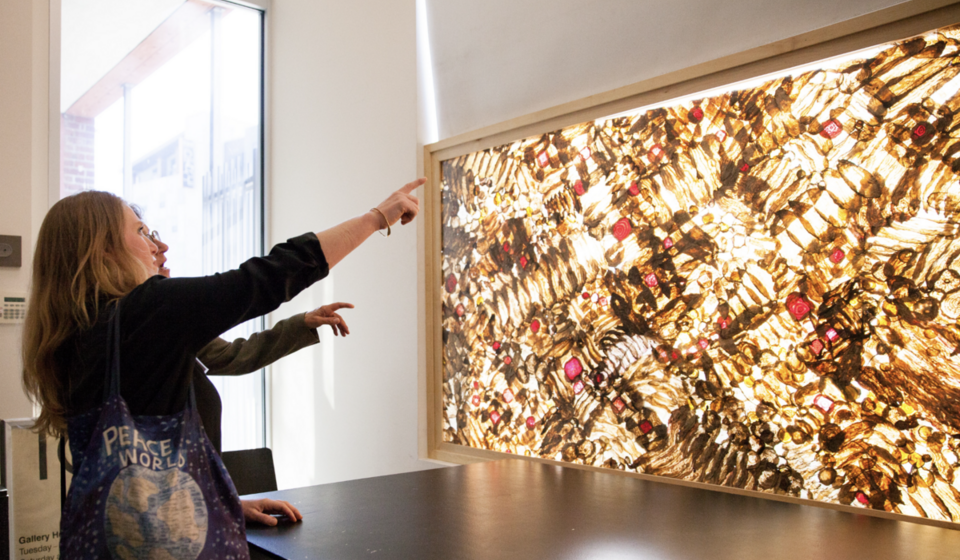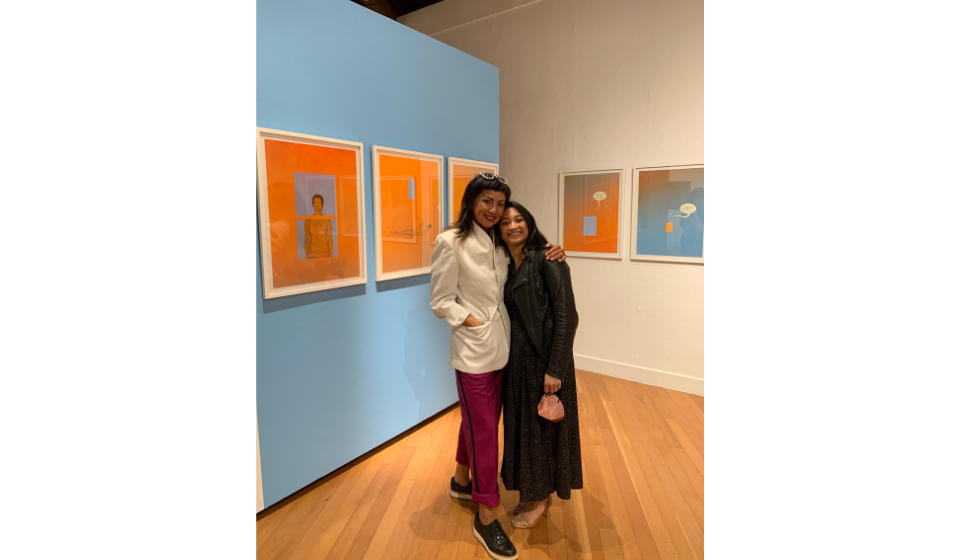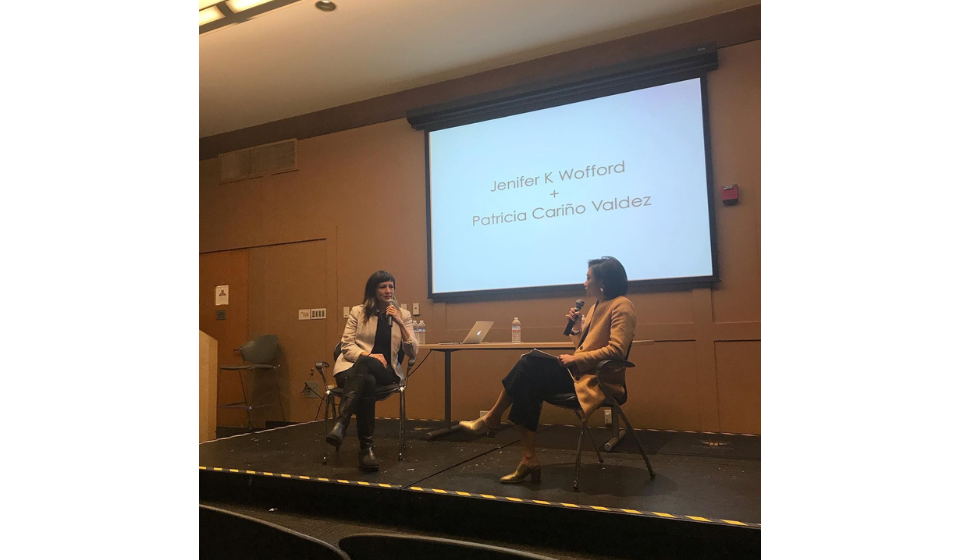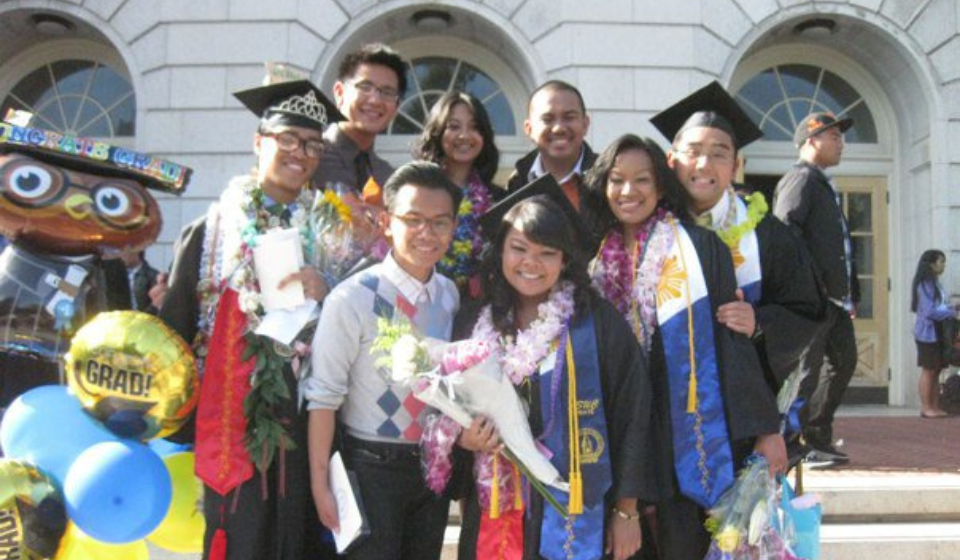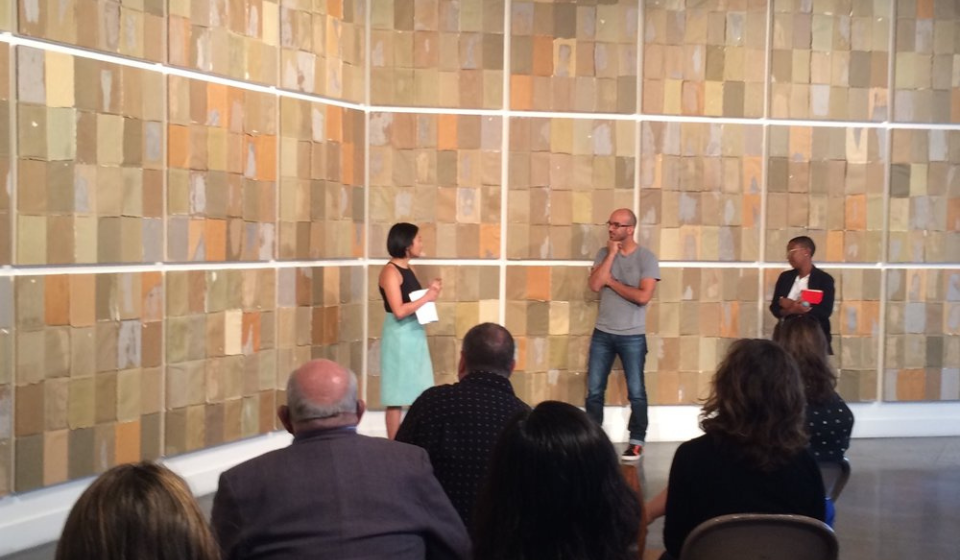Curators of Berkeley is a series of interviews with Berkeley alumni from a range of disciplines in the arts and humanities who work across curatorial practices and fields. Patricia Cariño Valdez is an art consultant, independent curator, and manager of the Olivia Collection.
Since you graduated from Berkeley's History of Art Program, you have worked as both a curator and programs director for museums and galleries, a collections manager, and an art consultant. What brought you to your curatorial practice, and what does that encompass?
My Interest in art took off during my time at Berkeley. The Berkeley Art Museum's imposing brutalist architecture [now retrofitted for the Bakar BioEngenuity Hub] and the thought-provoking exhibitions like one of my all-time favorite shows in 2008, Enrique Chagoya: Borderlandia, I encountered there inspired me to explore the field further. I didn't grow up with a family that attended museums, so I was fascinated by how these edifices could shape our understanding of history, community, and cultural values.
My unique background as a first-generation immigrant from a working-class family has influenced my perspective on art and culture—I've always wanted to understand how artists express complex experiences and challenge societal norms. This passion, combined with my desire to make art more accessible to diverse audiences, led me to pursue a career in curatorial work, which involves conducting research and studio visits, selecting and arranging artworks for an exhibition, writing interpretive texts, and collaborating with artists and other scholars. Since I didn't know any arts professionals growing up, I made it a point to work in different departments (fundraising, programming, events management) to learn and gain valuable skills. I knew that I loved working directly with artists — being able to help facilitate a vision, working through big ideas, and then bringing them to fruition was what I was good at, too.
Exhibitions are not just static displays of art but rather dynamic spaces for dialogue and engagement. By incorporating public programs and fostering collaborations with diverse communities, I aim to create immersive experiences that inspire new perspectives and challenge assumptions. For example, I presented Julia Goodman's three bodies of work at the San Jose Institute of Contemporary Art and curated a satellite exhibition at the Jewish Community Center of San Francisco. The program included a public program featuring an astronomer, Dr. Isabel Hawkins, at the Exploratorium and an urban gardener, which expanded our understanding of Goodman's themes of how we are all connected to each other, the earth, and the stars. It was a poetic show that also sparked further pathways of investigation for both the artist and scientists!


